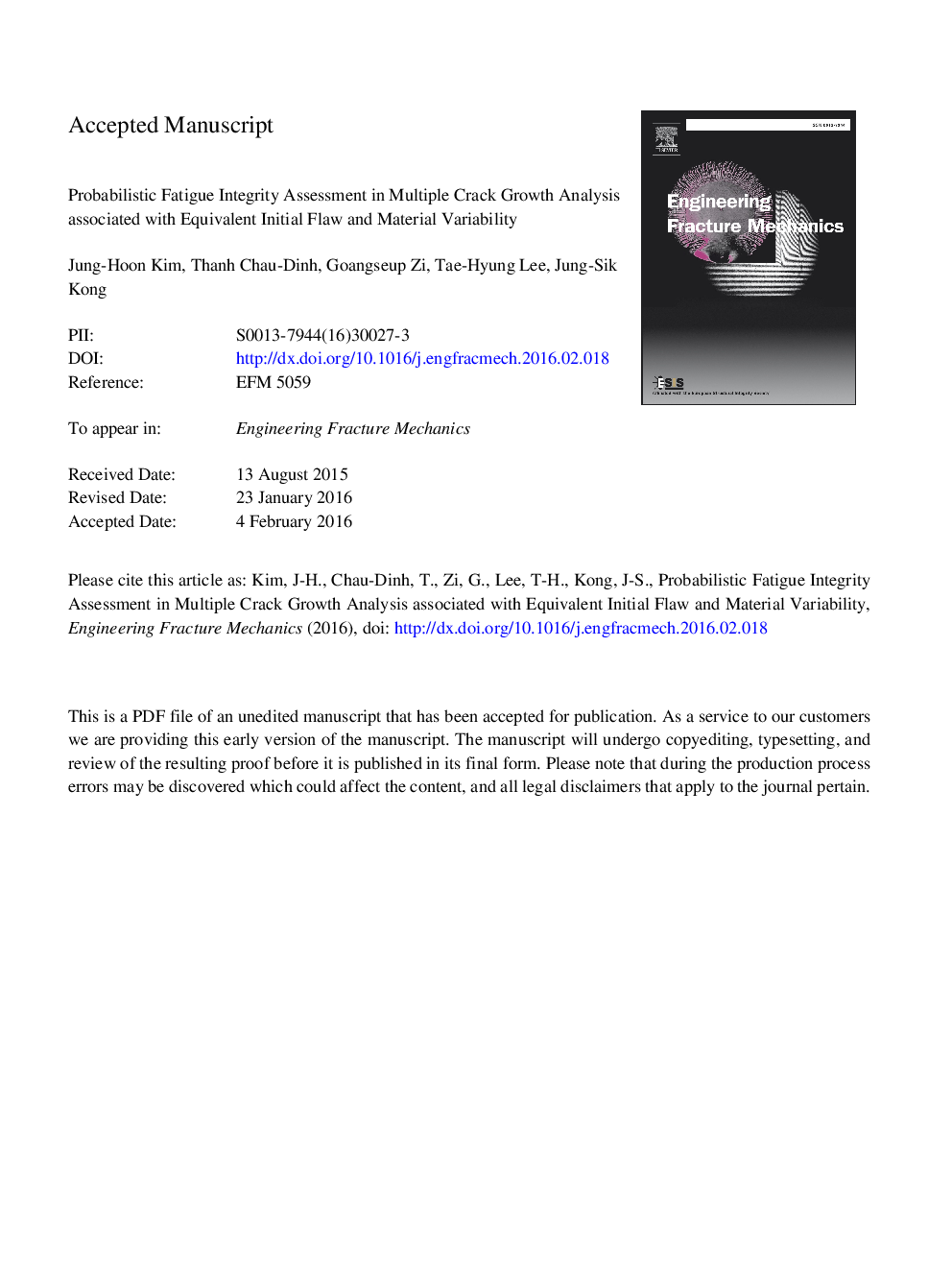| Article ID | Journal | Published Year | Pages | File Type |
|---|---|---|---|---|
| 770372 | Engineering Fracture Mechanics | 2016 | 32 Pages |
Abstract
The residual strength of components can be abruptly reduced due to multiple site damage (MSD). In general, the fatigue and fracture performance of MSD contains a significant number of uncertainties. Major uncertainties can be characterized by initial flaw, material variability and crack growth rates, among other factors. To cope with uncertain random variables, some probabilistic methods can be considered. However, these seldom obtain efficient and reliable results because of the complexities included in computations of fatigue and fracture mechanics, and probabilistic approaches. To overcome these difficulties in the life-cycle reliability analysis of MSD, the Gaussian process (GP) response surface model has been assembled with one of the recent multiple crack analysis tools, XFEM, in this study. The assembled GP-XFEM method represents a convenient way to obtain the response surface and sensitivity factors of multiple crack propagation in a structure (or a component) under a complex environment with computational efficiency. The accuracy and advantages of the proposed method were verified by a number of experimental results and numerical examples.
Related Topics
Physical Sciences and Engineering
Engineering
Mechanical Engineering
Authors
Jung-Hoon Kim, Thanh Chau-Dinh, Goangseup Zi, Won Woo Lee, Jung Sik Kong,
